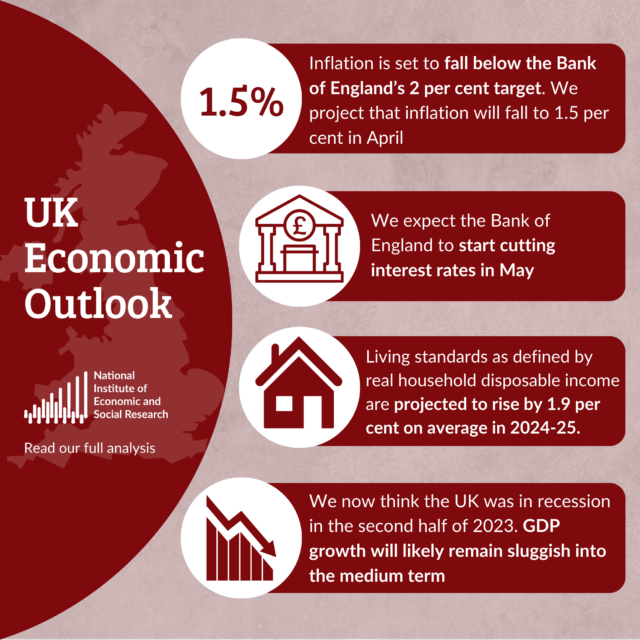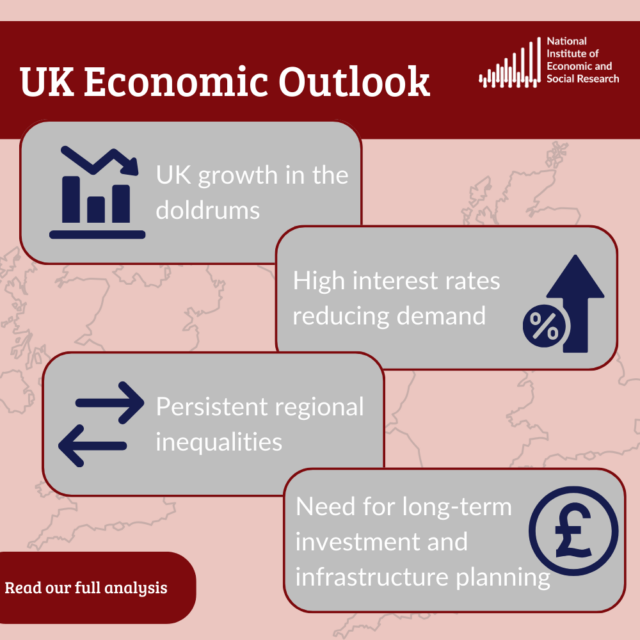Is the slow growth since the crisis cyclical or secular?
In the decade since the onset of the financial crisis, the disappointing recovery has sparked renewed concern about the medium-run outlook for advanced economies. Rather than returning to the pre-crisis trend, output has continued to diverge from it.
In the decade since the onset of the financial crisis, the disappointing recovery has sparked renewed concern about the medium-run outlook for advanced economies. Rather than returning to the pre-crisis trend, output has continued to diverge from it. It is difficult to know whether this is a cyclical phenomenon, a slow recovery towards steady state, or a secular change in the nature of steady state growth. In the August National Institute Review, we examine this issue.
Major financial crises can have long-lasting effects, and this makes it difficult to distinguish what is cyclical from what is secular. As an indication of the difficulty of separating low frequency signals from high frequency noise, the Great Moderation, the marked reduction in the variance of the US macroeconomy after 1984, was not recognised as a sustained change until the late 1990s. This was also an issue after the Great Depression of the 1930s. Alvin Hansen writing a decade after the Wall Street Crash, now sounds very topical with his concerns about the effects of demographic and technological change, the topics we cover in our Review paper. Hansen warned of the danger of secular stagnation driven by declining population growth, which would remove the incentive to invest, though he did not anticipate the offsetting effects of the subsequent war and the baby boom. He also criticised those who regarded the advance of technology as a major cause of unemployment, arguing that there was a need for an acceleration of the rate of progress in science and technology.
Echoing Hansen, after the last financial crisis Larry Summers, in a speech given in 2013, also warned of the dangers of secular stagnation. He noted the long term decline in real interest rates, and raised the concern that the equilibrium real rate may now have become negative and that a zero nominal rate would then become a chronic and systemic inhibitor of economic activity holding economies back below their potential.
While there may be an important transitory cyclical component in the poor performance of the last decade, we emphasise the secular forces likely to shape medium run macro-economic developments: demographic structure and innovation, drawing on our earlier empirical and theoretical work. This suggests that changes in age profile not only have significant implications for savings, investment, real interest rates and growth but also for innovation and that the population aging predicted for the next decades will tend to reduce output growth and real interest rates across OECD countries.
The age structure of the population can be measured quite precisely and since it is largely predetermined by past fertility and mortality it can be forecast rather better than many other economic variables, like Innovation, which is inherently difficult to measure. In addition the process by which technological change and innovation transmits to productivity can be quite opaque.
Hansen’s demographic concern was falling population growth rates, the current concern is with an aging population. As is now well known, age profiles in OECD economies are significantly changing. Figure 1 shows the average over 21 OECD countries of UN Population Division estimates of shares of each age group. In this sample, the average proportion of the population aged 60+ increased almost linearly from 16% in 1970 and is projected to reach 29% in 2030, with most of the corresponding decline experienced in the 0-19 age group. Figure 2 shows UK figures.
Even after a decade, it is inherently difficult to distinguish cyclical but long-lasting effects of the crisis from secular changes to steady states. Nonetheless, our empirical and theoretical results indicate that one secular trend, the aging of the population in OECD countries, which is expected to continue in the next decades, may contribute to reduced innovation, reduced output growth and reduced real interest rates across OECD economies. In consequence, the next decades may witness a shift in the focus of economic policy from short-run stabilisation, which has characterised the 1990s and most of 2000s, to medium-run economic performance of economies. We also believe that unless there are drastic changes most OECD countries will need to devise new policies to foster medium-run economic growth in an environment with aging population, perhaps by increasing investment in human capital.
Of course, demographics are not destiny and our conclusions assume that there will not be major changes in rates of immigration, labour force participation, fertility or longevity. In addition our argument depends on two interesting linkages that deserve further study: the demographic effects on Innovation and technological change and the demographic effects on real interest rates.






















